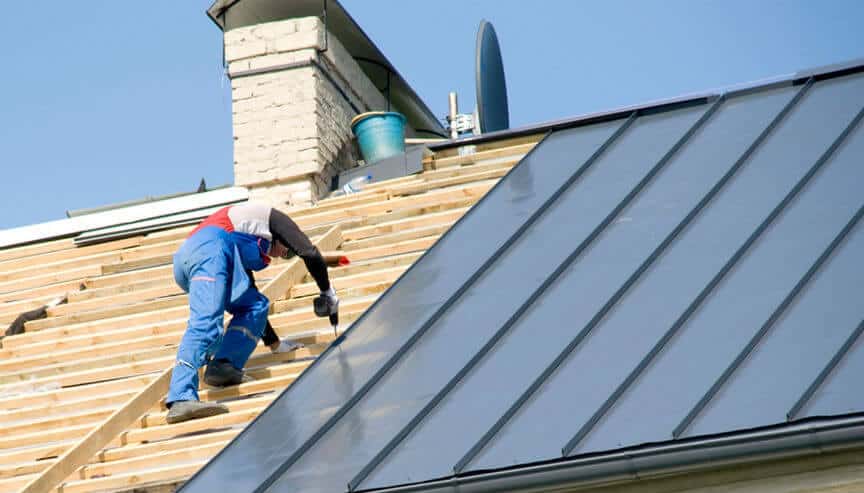Giovanni Valle is a licensed architect and LEED-accredited professional and is certified by the National Council of Architectural Registration Boards (NCARB). He is the author and managing editor of various digital publications, including BuilderSpace, Your Own Architect, and Interiors Place.
A roof system consists of various types of materials that are interconnected in order to provide weatherproof protection in buildings. In addition to being waterproof, roofs help protect buildings from the sun, rain, snow, and other elements.
Roofing materials vary depending on the shape of the roof, location and climate, and whether the use is for residential or commercial. Asphalt shingles are popular for residential use as they are fairly inexpensive and have a good lifespan. In commercial construction where flat roofs are more common, metal, EPDM, and built-up roofs are extensively used.
A wide variety of roof coverings exist today, each with its own advantages depending on the use. The most common roofing materials available include asphalt, wood, metal, clay, cement and slate, glass and plastic, and plastic liquid coatings.
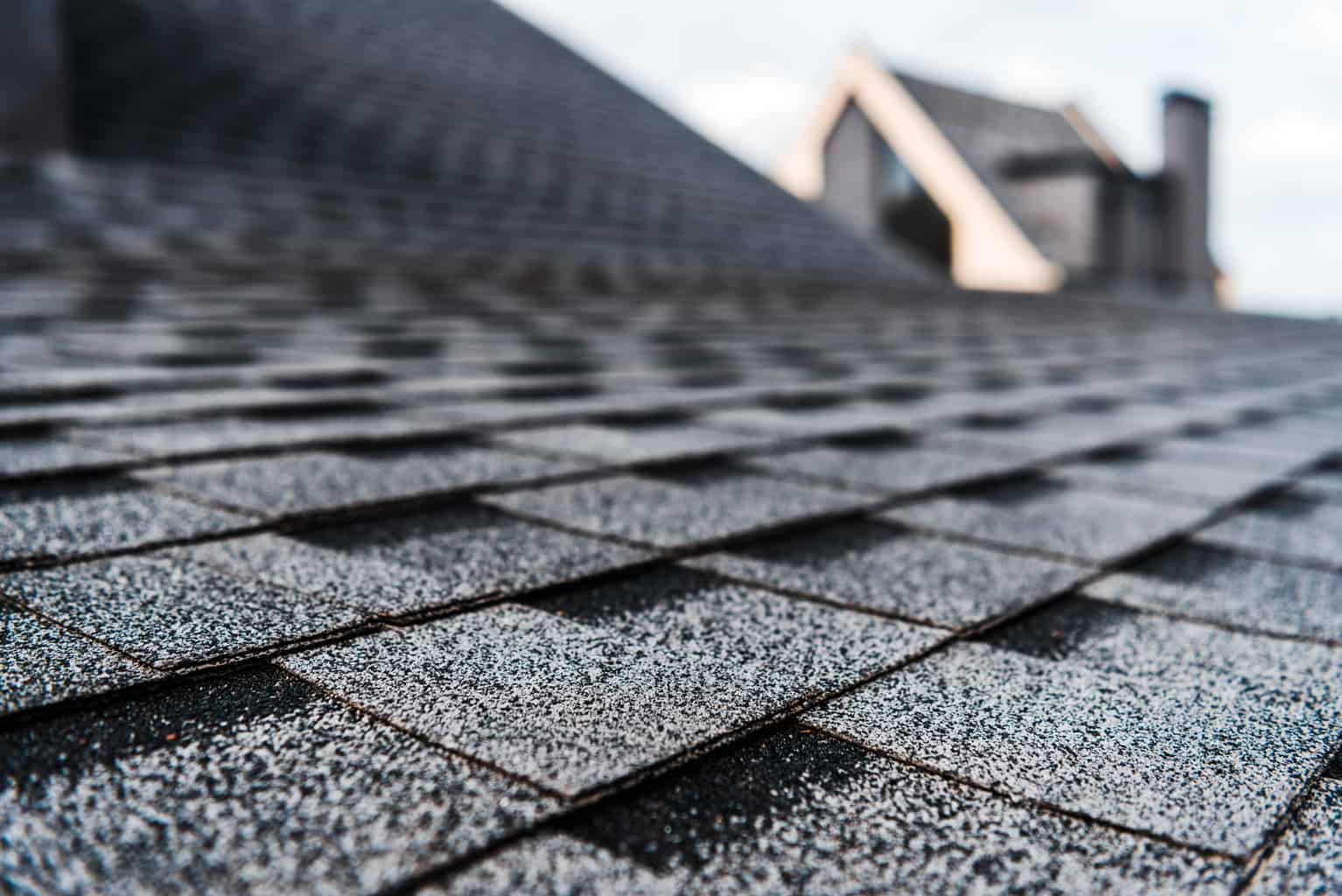
1. Asphalt Shingles
Asphalt shingles are die-cut from heavy sheets of asphalt-impregnated felt faced with mineral granules that act a a wearing layer and decorative finish.
The most common type of asphalt shingle, used predominently in residential roof construction throught the United States, is 12 inches by 36 inches (305 mm by 914 mm) in size.
Typically, asphalt shingles are slotted twice along their width in order to make them appear as if they are three smaller shingles. This gives the roof a finer visual scale when it is finished.
Installation of asphalt shingles is done in a lapped fashion with galvanized roofing nails on roof decks having a pitch of at least 3:12. Asphalt strip shingles are typically manufactured with adhesive tabs along the underside. This allows them to adhere to the shingle strip below and prevents them from blowing off the roof during high winds.
Asphalt-saturated felt paper is used underneath the shingles. In regions with cold winters, often codes require the installation of an ice-and-water barrier beneath the shingles along the eave. The most effective form of barrier is a strip of modified bitumen sheet that replaces the lowest course of asphalt-saturated felt paper.
Another type of asphalt roofing known as asphalt roll roofing is manufactured in rolls that are 36 inches wide, allowing it to be used on slightly to steeply pitched roofs. Similar to asphalt shingles in composition, they are also installed by lapping and nailing.
While very inexpensive, asphalt roll roofing is not commonly used in residential applications due to its appearance. It is mostly used in storage and agricultural buildings.
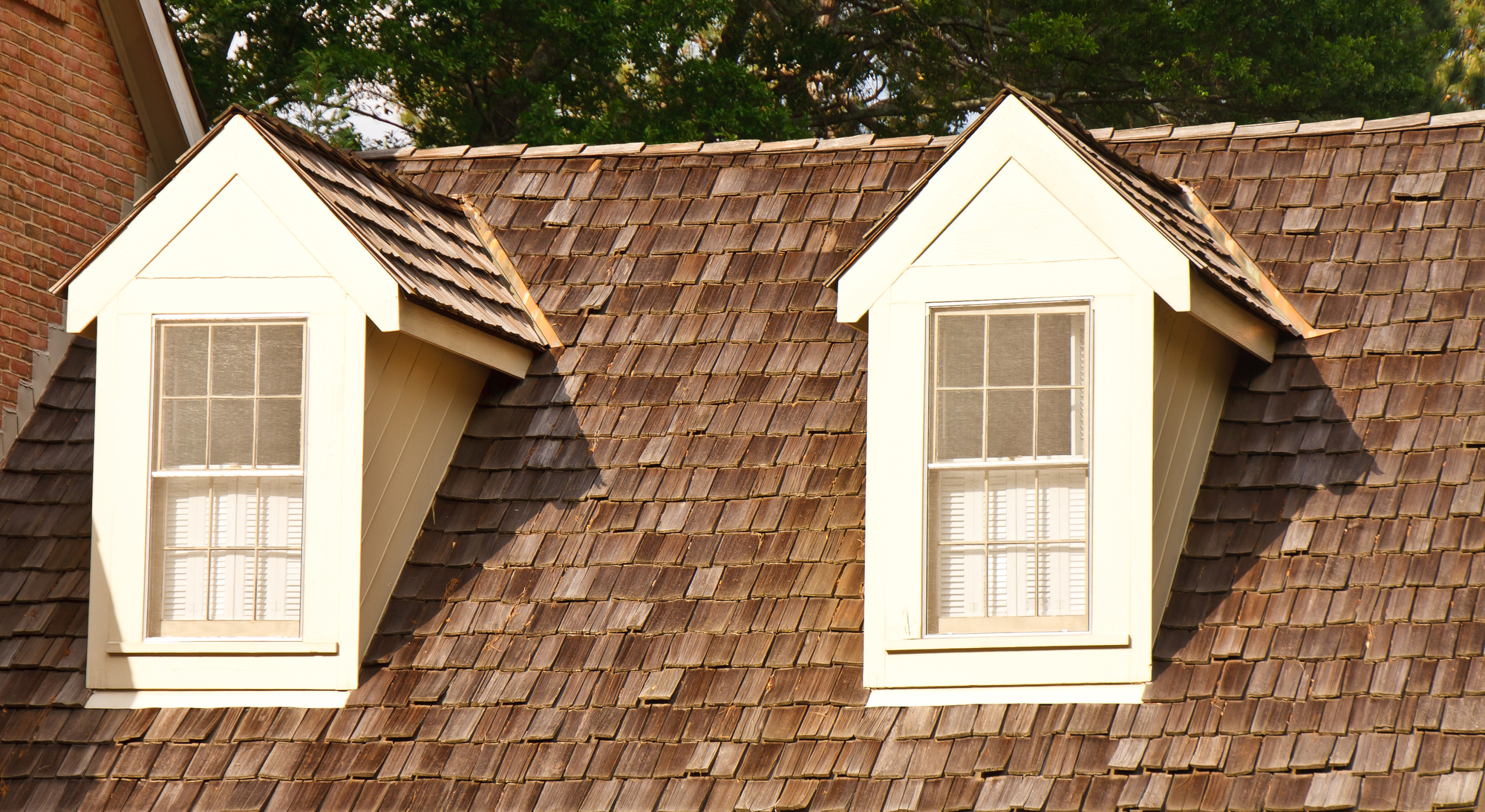
2. Wood Shingles
Wood shingles are made from decay-resistant wood species such as red cedar, cypress, redwood, etc. They are available in a variety of grades and are either machine-sawn or hand-split called shakes.
Wood shingles are applied both to roofs and walls over solid or spaced sheathing and fastened with aluminum or galvanized nails. The shingles are tapered in thickness, with the thickness of the butt (the thick end) expressed as the number of shingles required to produce a total thickness.
Wood shingles are typically installed on roofs with a slope of 4:12 or greater. In order to prevent cupping or rotating, they should be applied in a manner that allows for underside ventilation.
A weather barrier and sheathing layer is typically used underneath the wood shingles or shakes for added protection from the elements. In regions where snow is common, a solid sheathing and additional weather barrier is used.
A self-sealing peel-and-stick modified bituminous membrane is often used at the eaves valley, rake, and other detail areas. While a modified bituminous weather barrier is sometimes used, it should be avoided in a continuous application where the weather barrier needs to breathe.
Fire can be a concern with wood shingles, however, they are often pressure treated with fire retardant chemicals to prevent combustion. An alternative method of application is to spray, brush or mop with fire retardant chemicals after installation. If cost is a consideration, wood shingle shake roofs can be relatively expensive.
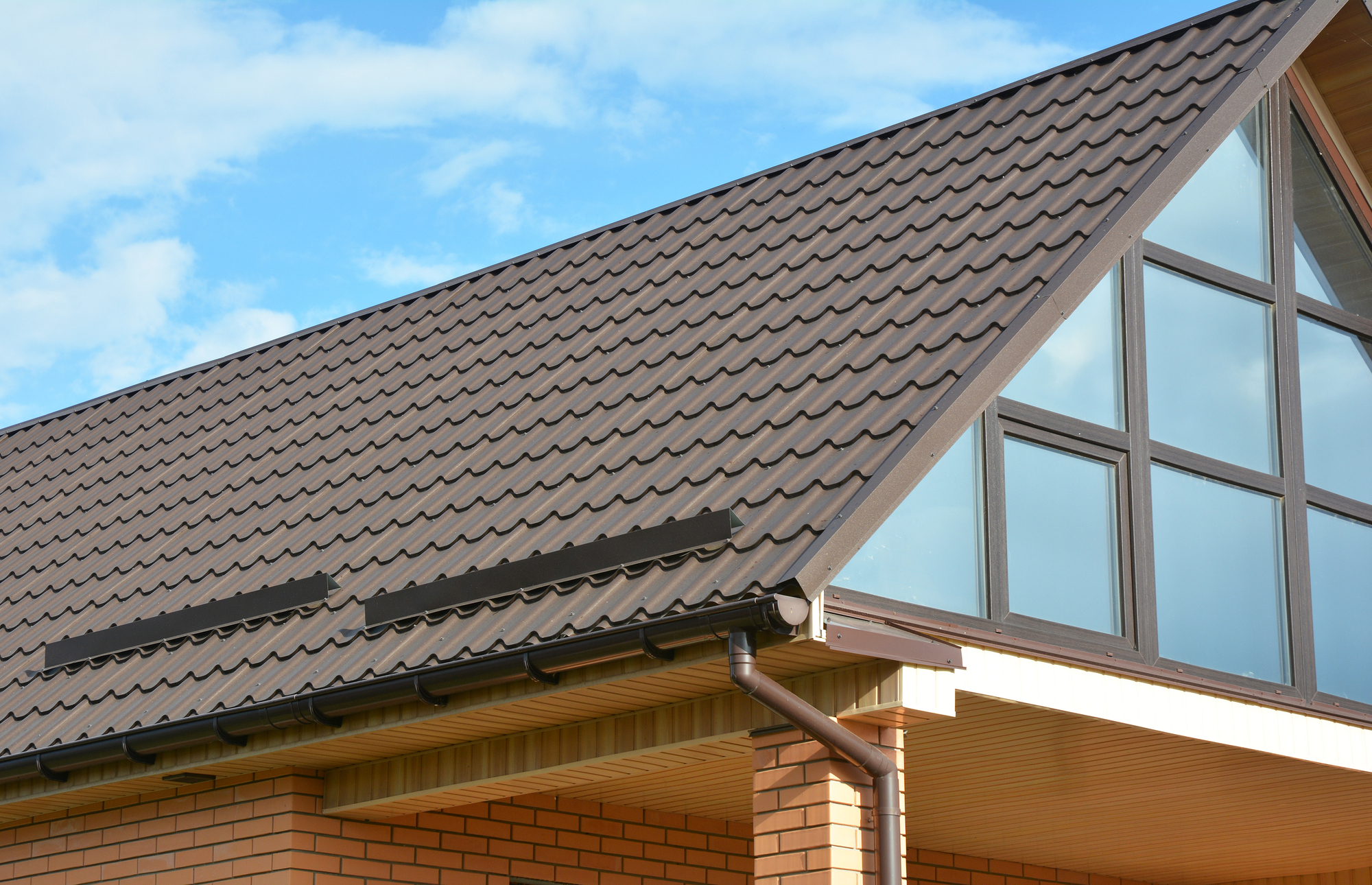
3. Metal Roofs
Metal roofs are commonly used on flat roofs but can also be used on roofs with a pitch of 3:12 or greater. If used on flat roofs they are commonly either soldered or welded, while on pitched roofs they are attached with either nails or screws of the same metal.
Metal roofing materials include galvanized iron, copper, aluminum, and terne plate (steel coated with lead and tin). Also used, but less common, are lead, zinc, and stainless steel.
In order to allow for movement, various installation details exist. These include the standing seam, batten seam, and flat-locked seam roofing systems. Additionally, corrugated metal is designed to respond to thermal movement better than sheet metal due to the shape of the panels.
When used on flat roofs, metal tiles are either soldered or welded. On roofs with a pitch of 3:12 or greater, metal screws or nails are typically used.
Metal roofs are very durable and can last for many years. Additionally, they are lightweight and easy to handle, quicker to install, and require fewer building components.
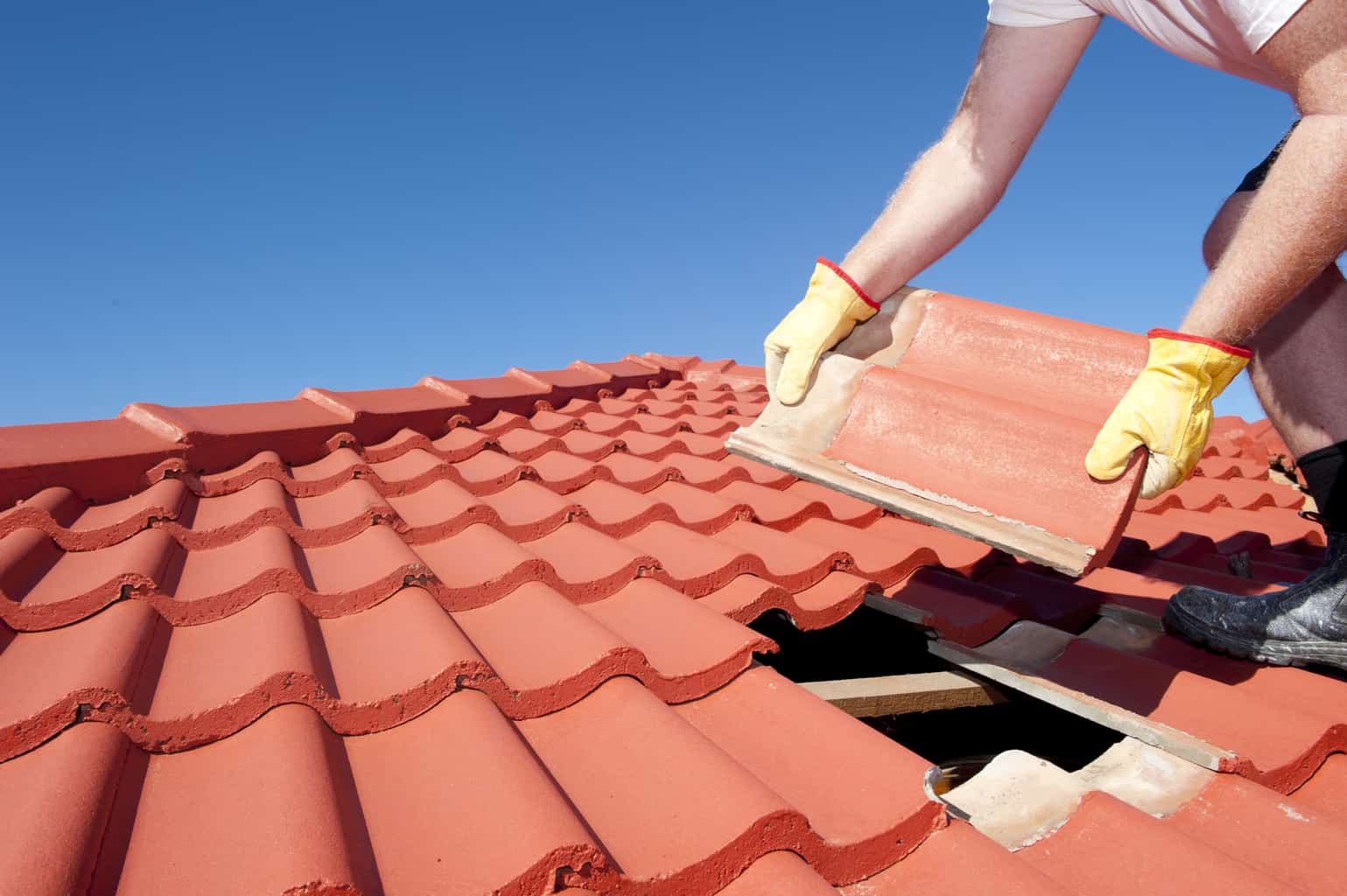
4. Clay Tiles
Tile roofs, in general, tend to be heavy, very durable, fireproof, and relatively expensive. They are always applied to sloping roofs, lapped over the proceeding courses, and attached with nails.
Clay tiles typically come in three different profiles: flat, barrel, and S-shaped. Barrel and S-shaped tiles are also commonly referred to as “mission tiles”.
They are available in a wide range of earth colors, patterns, and can be glazed. Clay tiles are manufactured from the same clays as bricks. Since they are formed from natural materials, their color uniformity is dependent on the uniformity of the raw clay.
When glazed, color consistency tends to be more uniform. Unglazed tiles weather slightly over time. Glazed tiles are available in a larger selection of colors including bright blues, greens, reds, and oranges.
5. Cement Tiles
Cement roofing tiles are manufactured from Portland cement and fine aggregate. They tend to be less expensive than clay tiles and also come in a variety of colors and shapes that resemble clay tiles.
Concrete tiles are formed by pressing them in molds under pressure. The synthetic oxide compounds color their surface. Sometimes cement tiles are painted, which tends to fade over time.
Cement tiles tend to be more porous than clay. This makes them naturally less strong and durable. However, cement tiles are typically sealed in order to offset this. They usually need to be resealed again over time.
6. Slate Tiles
Slate roofs are extremely durable, sometimes lasting as long as 75 or 100 years. Their upfront cost can be quite expensive, however, this is offset by their long lifespan.
Slate roofing tiles or shingles are quarried from natural rock and split into thin rectangular slabs. Sizes vary from about one-quarter inch to half an inch in thickness and an average dimension of about 12 inches by 16 inches.
Slate is available in a variety of colors and textures from a rough surface to smooth. Common color nomenclature includes: black, blue-black, mottled gray, purple, green, mottled, purple and green, purple varigated, and red.
It’s important when installing slate tiles to also use supporting and accessory materials that are comparable in terms of their lifespan.
The minimum weather barrier is a single layer of No. 30 un-perforated asphalt saturated felt with double coverage up to 20 in 12 slopes. No 45, 50, or 60 felts are typically used under textural or graduated slates.
Nail fasteners typically used include large head hard copper wire nails, cut copper, cut brass, or cut yellow metal slating nails. Sheet metal flashing, of minimum 20 oz. copper or lead-coated copper is typically embedded in the slates.
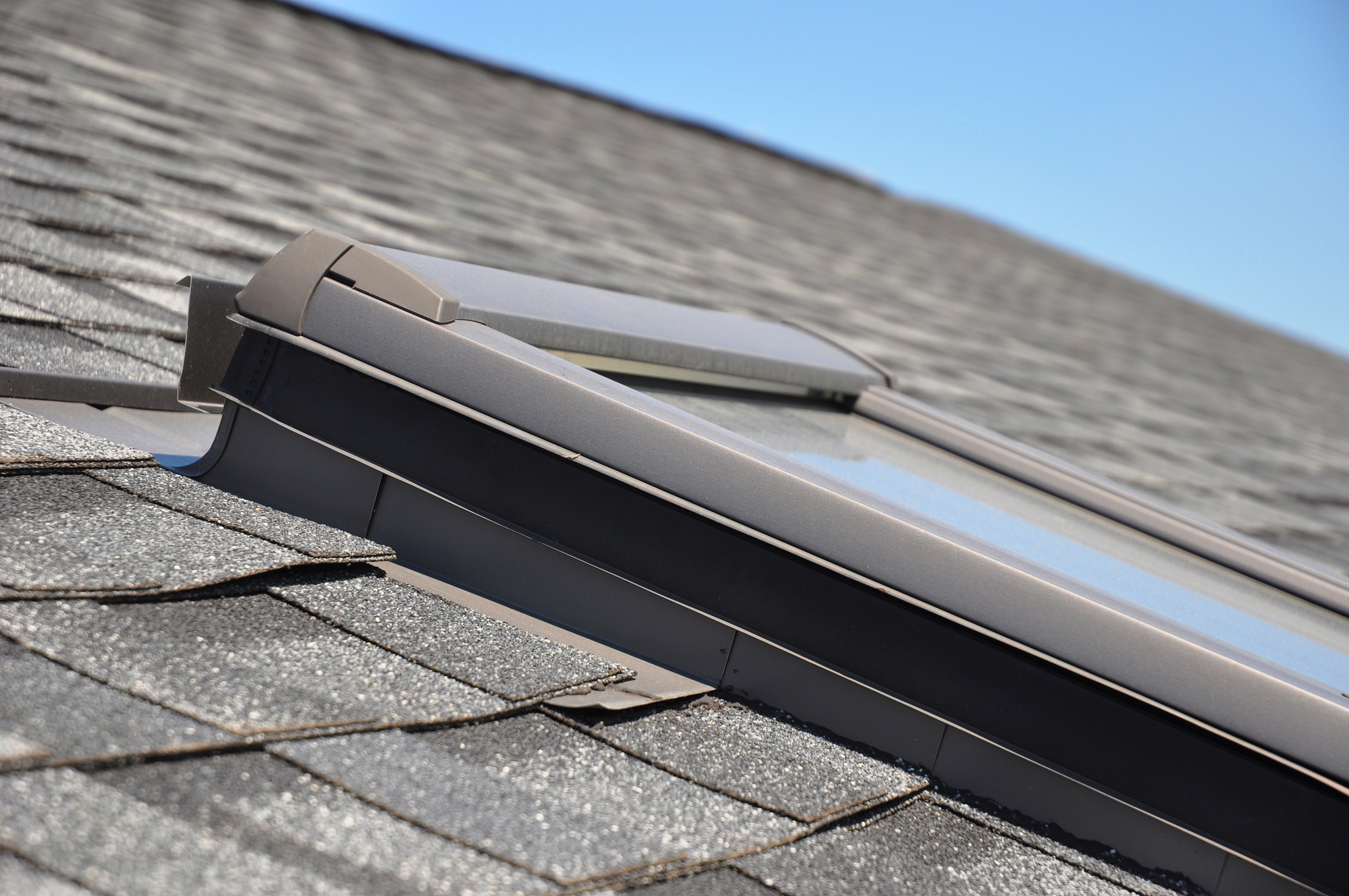
7. Glass and Plastic
Glass and translucent plastic sheets are used in skylights and clearstories or in industrial structures or greenhouses. Both plastic and glass have poor resistance to fire and therefore wire-reinforced glass and fiberglass-reinforced acrylic sheets are commonly used.
Skylights come in various shapes, including flat, domed, arched, and pyramidal. They can also be either fixed or operational, providing venting through the roof in a similar fashion to a window.
Frames for skylights are typically mounted on a built-up fabricated or site-built curb, with integral counterflashing. They can be assembled with or without insulation.
Skylights can be beneficial in providing natural light to interior spaces, reducing the dependency on electrical lighting. During the winter months, they can also provide direct solar radiation for improved space heating.
8. Built-Up Bituminous Roofing
Built-up bituminous roofs are made up of a base sheet attached to the roof substrate, two or more reinforcing felt ply sheets, and a surfaced cap sheet. Asphalt and coal tar are the primary bituminous materials used for built-up roofing.
As the heated mopping bitumen fuses with the saturating bitumen in the roofing felts, the layers are welded together. Surfacing include aggregate, minerals, protective or reflective coatings, and smooth surface.
Four type of asphalt and three types of coal tar are currently used as bitumen in built-up roofing assemblies. Below is a table outlining each type:
Coal-Tar Types
| Type No. per ASTM D 450 | Type of Coal Tar | Softening Point (min) | Softening Point (max) |
| I | Coal-tar pitch | 126 | 140 |
| II | Waterproofing pitch | 106 | 126 |
| III | Coal-tar bitumen | 133 | 147 |
Asphalt Types
| Type | Kind of Asphalt | Softening Point (min) | Softening Point (max) | Maximum Temp (F) |
| I | Dead-level asphalt | 151 | 135 | 475 |
| II | Flat asphalt | 176 | 158 | 500 |
| III | Steep asphalt | 205 | 185 | 525 |
| IV | Special steep asphalt | 225 | 210 | 525 |
9. EPDM Roofing
EPDM stands for Ethylene-propylene-diene-monomer, a type of single-sheet membrane roofing material that comes in typical thicknesses of 30 to 60 mils.
The membranes are available either reinforced with fabric or non-reinforced. Seams in the membrane are spliced and cemented. They may either be loose laid, mechanically fastened, or fully adhered to either nailable or nonnailable decks.
EPDM, as a material, is highly resistant to degradation from certain chemicals, as well as from the ozone and ultraviolet radiation. EPDM membranes have excellent resilience and tensile strength, abrasion resistance, hardness, and weathering properties.
10. PVC Roofing
Polyvinyl Chloride (PVC) roofing membranes are another type of commonly-used membrane roofing system. PVC membranes may be either nonreinforced or reinforced with glass fibers or polyester fabric.
The membranes are typically 45 to 60 mils in thickness. Seams are sealed by heat or chemical welding and often require additional caulking.
PVC membranes are durable and resistant to bacterial growth, industrial chemical atmospheres, root penetration, and extreme weather conditions. They also have excellent fire resistance and seaming capabilities.
PVC membranes can be loose laid, mechanically fastened, or fully adhered to either nailable or nonnailable decks. Some PVC membranes may have a factory-applied coating to enhance weather-resistance.
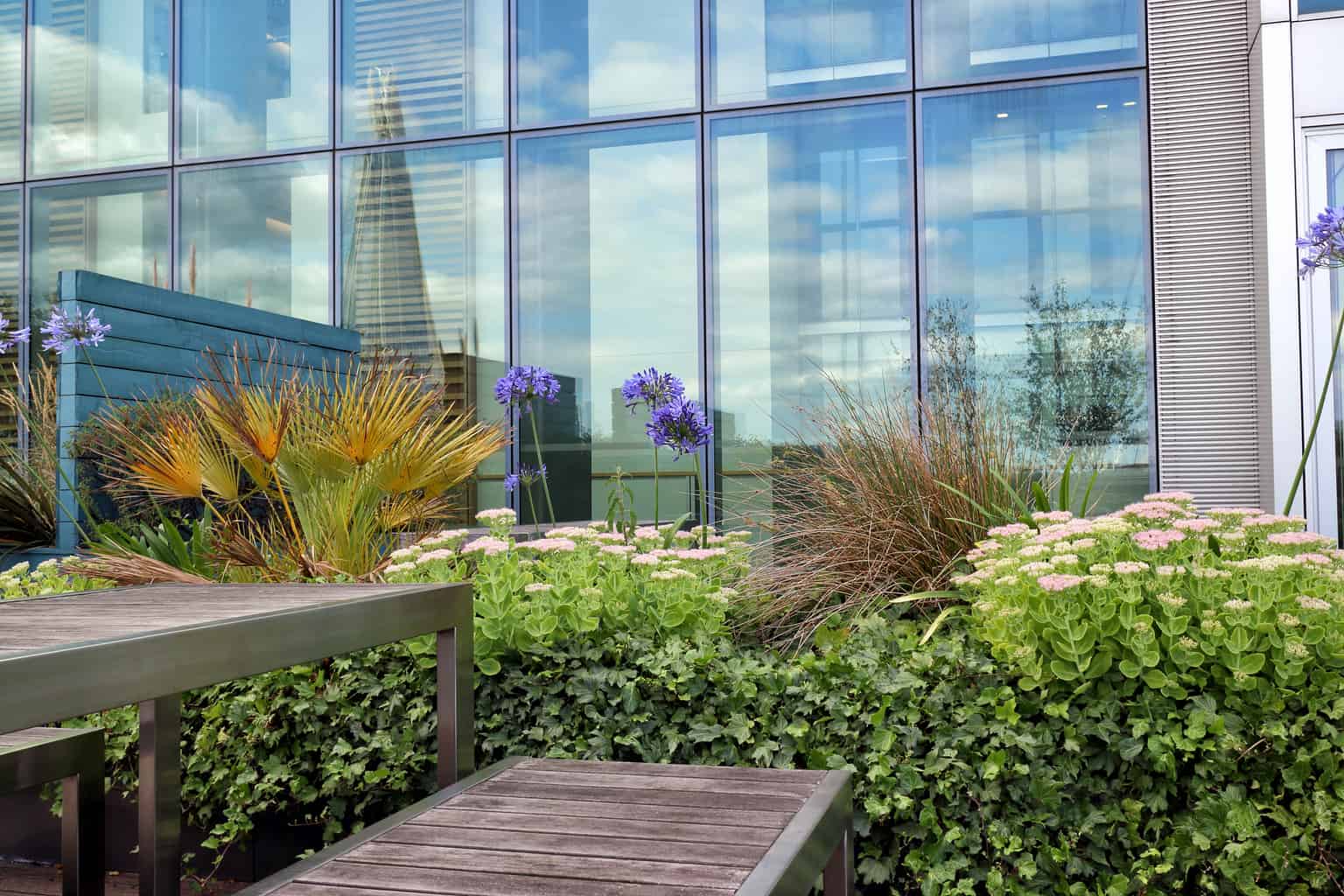
Sustainable Roof Systems
In addition to traditional roofing materials, new eco-friendly materials and roof systems are being explored. Roof gardens, for example, are becoming more common in buildings with flat roofs. They offer both an added functional amenity as well as improved heat control.
By absorbing more of the sunlight and reducing heat gain (heat island effect), roof gardens also help reduce the use of traditional cooling systems, such as air conditioning during the hot seasons. Roofing materials that are manufactured in light shades of color can have a similar impact by reducing the heat island effect.
In addition to thermal heat transfer control, new innovative roofing materials are being used to harness the energy of the sun to meet the energy demands of the building. Photovoltaic panels are being reimagined to take the form of more traditional roofing materials.
Closing Notes
Roofs are the first layer of protection in a building. From sunlight to rain, to snow, materials used in roofing are being constantly subjected to the elements. The selection of roofing materials, therefore, can have a big impact on the performance and lifespan of a building.
A wide range of roofing materials are available today. Their use varies depending on geographic location, roof shape, and desired look. In residential construction, asphalt shingles are most common due to cost and durability. In commercial construction where flat roofs are more common, metal, EPDM, and built-up roofs are often used.
Newer roofing materials and methods of construction are also harnessing the energy of the sun and helping reduce the heat island effect on the surrounding environment. It is likely that in the future these new and sustainable roofing materials will continue to improve and help buildings achieve a carbon-neutral footprint. As such, roofing materials will be more efficient and likely be the primary source of energy production in a building.
Share this Post

